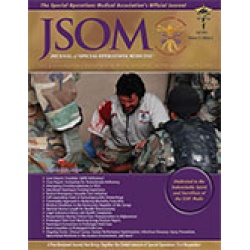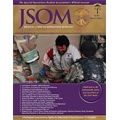Resuscitation During Critical Care Transportation in Afghanistan
Tobin JM, Nordmann GR, Kuncir EJ 15(3). 72 - 75 (Journal Article)
Objective: These data describe the critical care procedures performed on, and the resuscitation markers of, critically wounded personnel in Afghanistan following point of injury (POI) transports and intratheater transports. Providing this information may help inform discussion on the design of critical care transportation platforms for future conflicts. Methods: The Department of Defense Trauma Registry (DoDTR) was queried for descriptive data on combat casualties with Injury Severity Score (ISS) greater than 15 who were transported in Operation Enduring Freedom (OEF) from 1 January 2010 to 31 December 2010. Both POI transportation events and interfacility transportation events were reviewed. Base deficit (BD) was evaluated as a maker of resuscitation, and international normalized ratio (INR) was evaluated as a measure of coagulopathy. Results: There were 1198 transportation events that occurred during the study period - 634 (53%) transports from the POI and 564 (47%) intratheater transports. Critical care interventions were performed during 147 (12.3%) transportation events, including intubation, cricothyrotomy, double-lumen endotracheal tube placement, needle or tube thoracostomy, central venous access placement, and cardiopulmonary resuscitation. The mean BD on arrival in the emergency department was -5.4 mEq/L for POI transports and 0.68 mEq/L intratheater transports (ρ < .001). The mean INR on arrival in the emergency department was 1.48 for POI transports and 1.21 for intratheater transports (ρ < .001). Conclusions: Critical care interventions were needed frequently during evacuation of severely injured personnel. Furthermore, many troops arrived acidotic and coagulopathic following initial transport from POI. Together, these data suggest that a platform capable of damage control resuscitation and critical care interventions may be warranted on longer transports of more critically injured patients.


 Español
Español 




